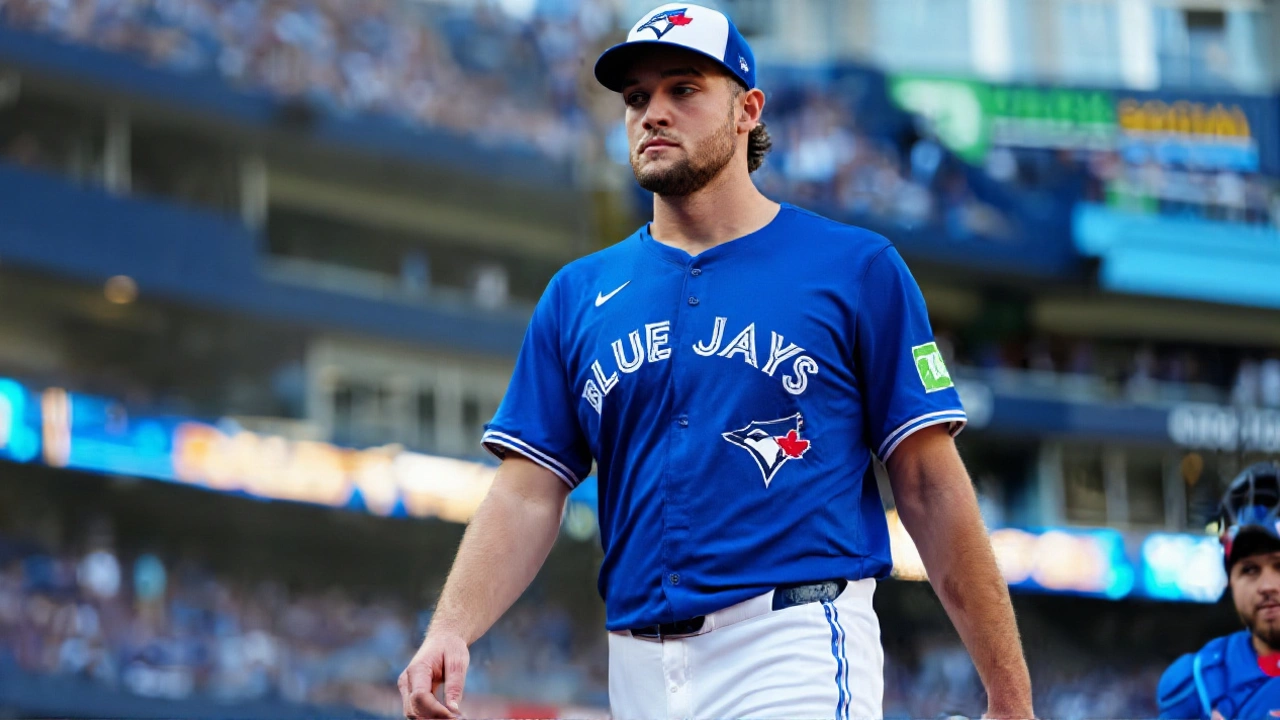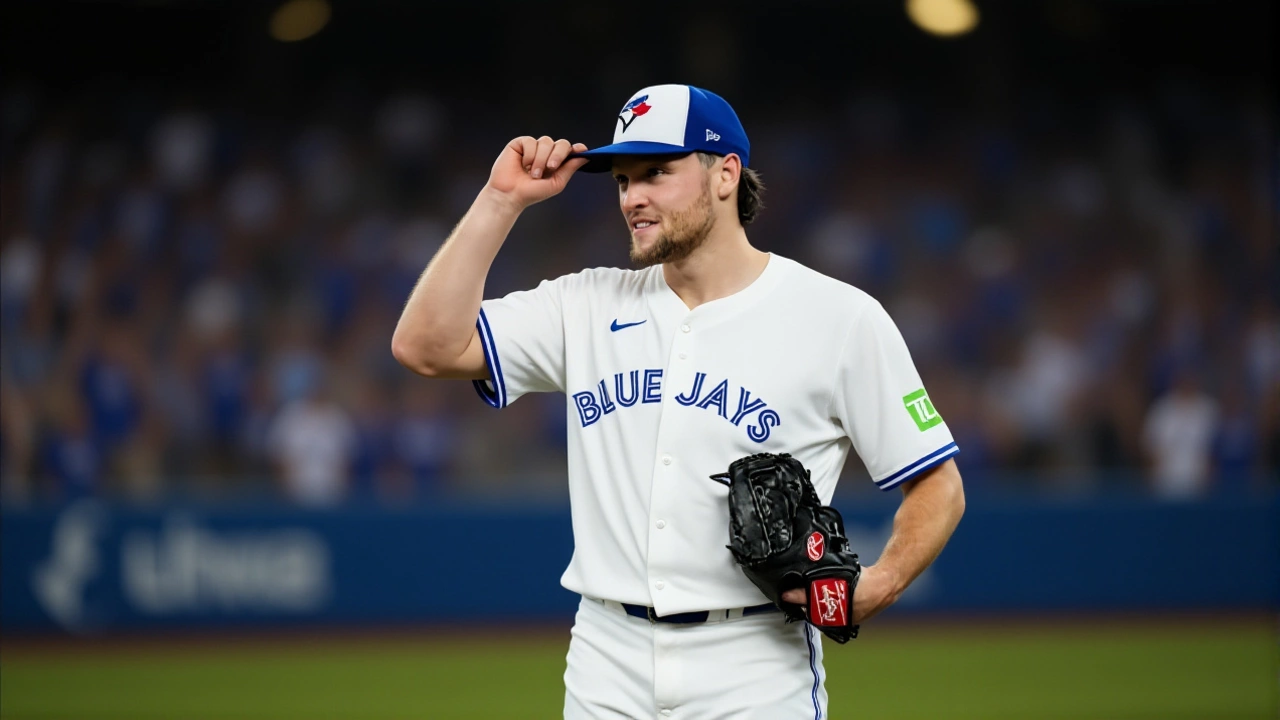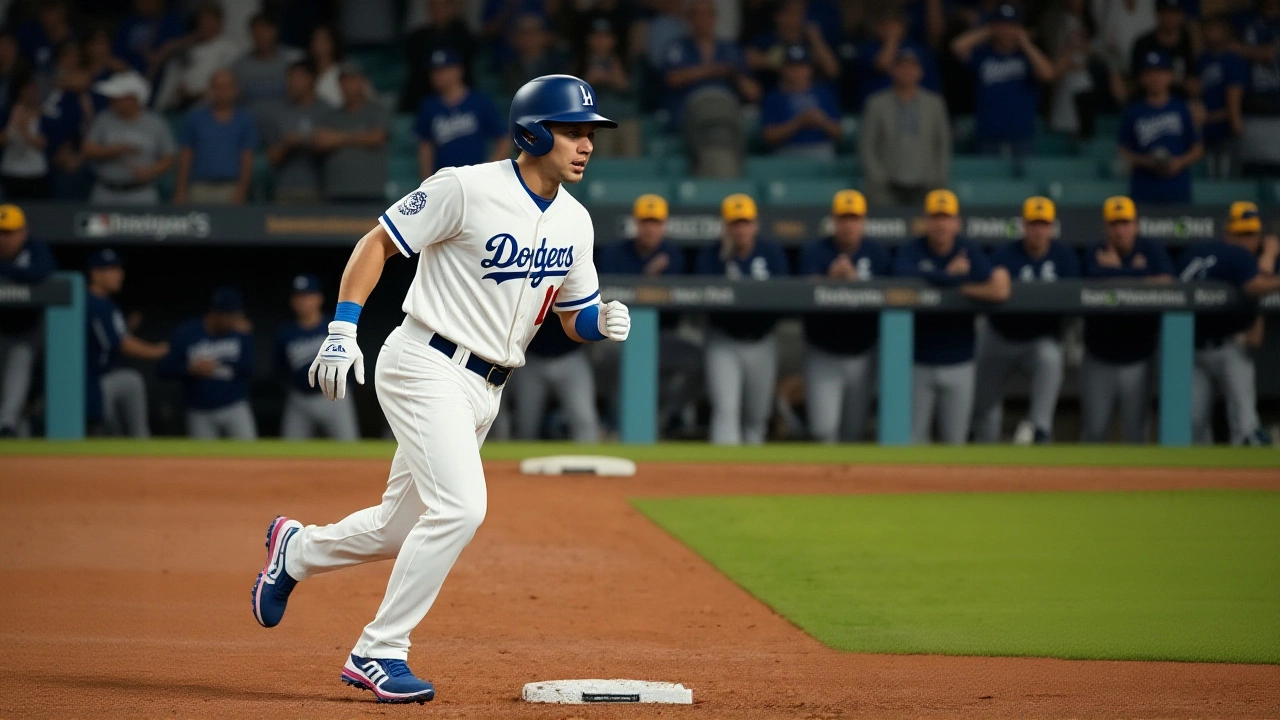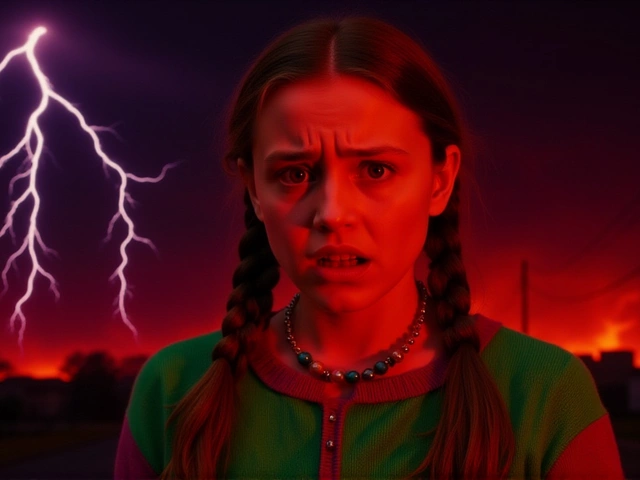When Trey Yesavage, starting pitcher of the Toronto Blue Jays, took the mound at Rogers Centre on Friday, October 24, 2025, the baseball world took notice. The 22‑year‑old rookie became the second‑youngest Game 1 starter in World Series history, limiting the Los Angeles Dodgers to two runs over four innings and striking out the league’s marquee dual‑threat, Shohei Ohtani, in the very first frame. The Blue Jays rode a nine‑run sixth inning to a decisive 11‑4 victory, snapping a 32‑year World Series drought that stretched back to 1993.
Background and Historical Significance
The 2025 World Series pit two storied franchises against each other: the Dodgers, who were chasing back‑to‑back titles, and the Blue Jays, making their first Fall Classic appearance since the early ’90s. Yesavage’s ascent was meteoric. He began the season in the Class‑A Florida State League with the Dunedin Blue Jays, pitching in front of crowds that never exceeded 350 fans. By mid‑season, he earned a promotion to Triple‑A and made his major‑league debut in late July, compiling just six starts before the post‑season.
His predecessor as the youngest Game 1 starter was Ralph Branca, who threw for the Brooklyn Dodgers in 1947 at 21 years, 267 days old. Yesavage, at 22 years and 88 days, now sits second on that list, a milestone that underscores how quickly the Blue Jays have thrust their top prospect into the spotlight.
Game 1: Key Moments and Statistics
The opening inning set the tone. Yesavage delivered a razor‑sharp splitter that fooled Ohtani, sending the Japanese star’s swing high and away for a called third‑strike. "It's my goal to go out there and strike out everybody I face," Yesavage told reporters after the game. "Starting the game on a hot note was definitely a boost in my confidence. It was cool. It was really cool."
- Yesavage’s line: 4 IP, 2 R, 3 BB, 5 K
- Dodgers’ offense: 10 hits, 2 runs, 1 RBI (Freddie Freeman’s solo shot in the third)
- Blue Jays’ breakout: 9‑run sixth inning, highlighted by a three‑run homer from George Springer and a two‑run double by Vladimir Guerrero Jr.
- Attendance: 49,862 – a max‑capacity crowd roaring at Rogers Centre
Despite walking three batters and surrendering four hits, Yesavage kept the Dodgers' potent lineup in check. Blake Snell, the Dodgers’ Game 1 starter, lasted only 1 2/3 innings before a shoulder strain forced an early exit, prompting the bullpen to scramble. Edgardo Henriquez and Will Klein, called up on short notice, steadied the ship, while the Dodgers announced that Alex Vesia would miss Game 2 due to a "deeply personal family matter."
Reactions from Players and Coaches
Blue Jays manager John Schneider praised his rookie’s poise: "Trey showed the kind of composure you only see in veterans. He let his stuff do the talking and didn’t get rattled when the crowd got loud."
Dodgers manager Dave Roberts remained cautiously optimistic. "We trusted our rotation to get us through the first two games," he said, "but the early strikeout of Ohtani reminded us this is a different animal. We’ll adjust and come back stronger."
Ohtani, who finished 0‑for‑2 with a strikeout, shrugged it off. "I’ve struck out a lot in my career," he laughed, "but it’s a learning experience. I’ll be ready for Game 2."

Implications for the Series
The Blue Jays now hold a 1‑0 lead, a position they haven’t enjoyed since their 1992 championship. The nine‑run surge in the sixth inning not only put the game out of reach but also sent a clear message: Toronto’s offense, led by ALCS MVP Vladimir Guerrero Jr., can explode at any moment.
For Los Angeles, the loss raises questions about the health of their rotation. Both Snell and Tyler Glasnow are dealing with minor injuries, while veteran Clayton Kershaw, listed on the roster, remains a potential late‑series catalyst. The Dodgers will lean on Yoshinobu Yamamoto, who pitched a complete game in his last start, to keep them alive.
Strategically, the Blue Jays’ decision to slot Bo Bichette back at second base—despite a 47‑day layoff and a six‑year hiatus from the position—proved wiser than critics predicted. Bichette went 2‑for‑4 with a double and a stolen base, contributing to the offensive outburst.
Looking Ahead: Game 2 Preview
Saturday, October 25, 2025, will feature Yoshinobu Yamamoto on the mound for the Dodgers, who hope his durability can offset the early‑game fatigue that plagued Snell. Toronto has yet to name its Game 2 starter, but insiders suggest the club may lean on veteran right‑hander Chris Bassitt to keep the momentum rolling.
If the Blue Jays can replicate their sixth‑inning fireworks, the series could swing decisively in their favor. Conversely, a strong outing from Yamamoto paired with a disciplined Dodgers lineup could level the series at 1‑1 and set up a classic showdown.

Key Facts
- Game 1 took place on October 24, 2025, at Rogers Centre, Toronto.
- Trey Yesavage became the second‑youngest Game 1 starter in World Series history.
- The Blue Jays won 11‑4, scoring nine runs in the sixth inning.
- Dodgers’ Alex Vesia missed Game 2 due to a family matter.
- Blue Jays end a 32‑year World Series drought.
Frequently Asked Questions
How does Yesavage’s performance affect the Blue Jays’ chances in the series?
Yesavage’s poise and strikeout ability gave Toronto a solid opening win and a psychological edge. If he continues to limit the Dodgers’ heavy hitters, the Blue Jays gain a strategic advantage that could force Los Angeles to over‑rely on its bullpen, which is already stretched thin.
What injuries are impacting the Dodgers’ rotation?
Blake Snell left Game 1 with a shoulder strain, and Tyler Glasnow is nursing a lingering elbow issue. Both are listed on the roster but may be limited, prompting the Dodgers to rely heavily on Yoshinobu Yamamoto and veteran Clayton Kershaw for later games.
Why was Anthony Santander absent from the lineup?
Santander suffered a low‑back injury in the ALCS and was removed from the World Series roster. His absence removed a left‑handed power bat, but other hitters, especially Vladimir Guerrero Jr., stepped up to fill the void.
What does the Dodgers’ bullpen situation look like after Game 1?
With Alex Vesia out for personal reasons and Tanner Scott still recovering from injury, the Dodgers trimmed their bullpen to eight arms. This thinness means each reliever will see higher leverage situations, increasing the odds of another blown lead.
How significant is the Blue Jays’ ninth‑run inning in World Series history?
Scoring nine runs in a single inning ties the record for the most runs in a World Series inning since the modern era began. The burst not only gave Toronto a comfortable lead but also set a tone that could demoralize the Dodgers heading into Game 2.



